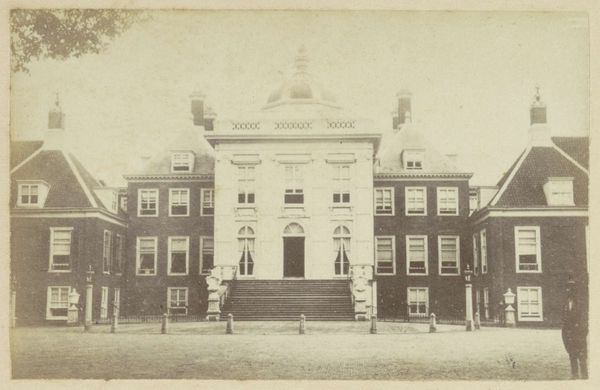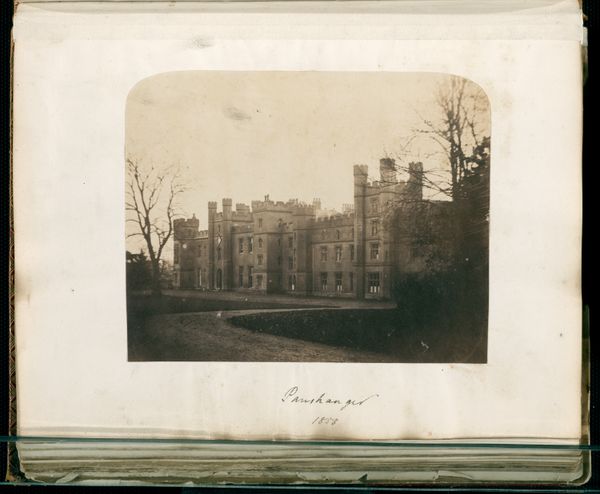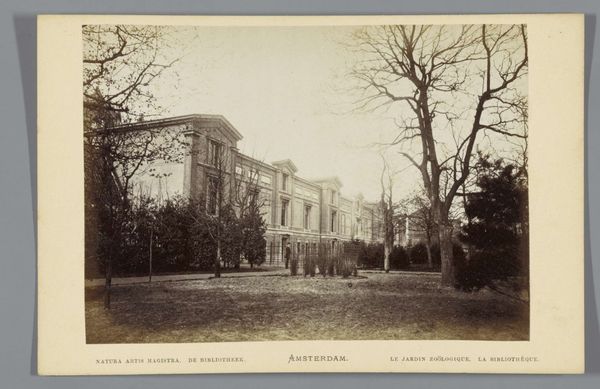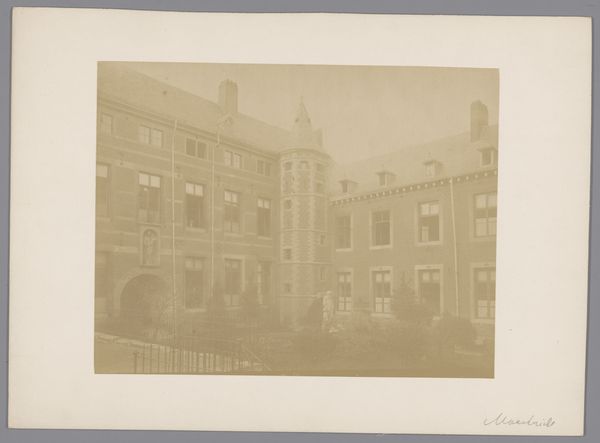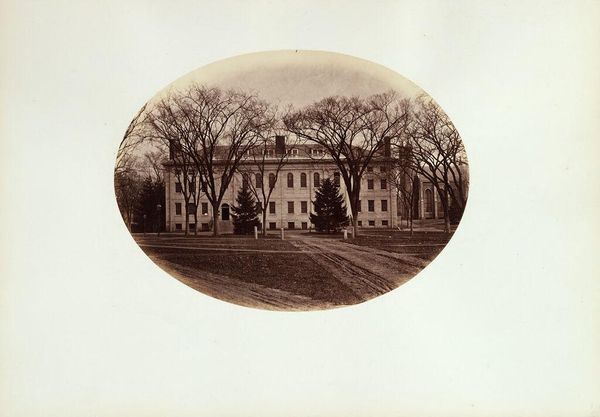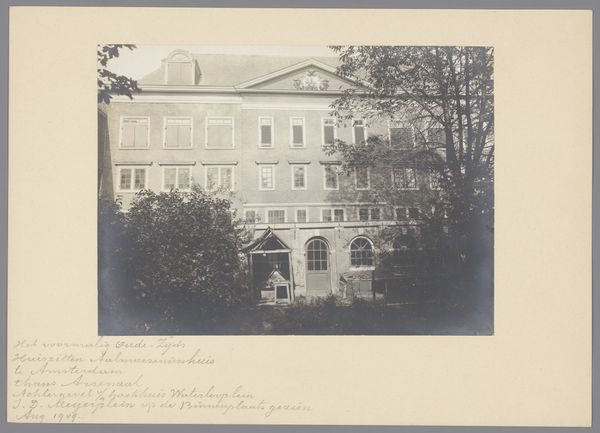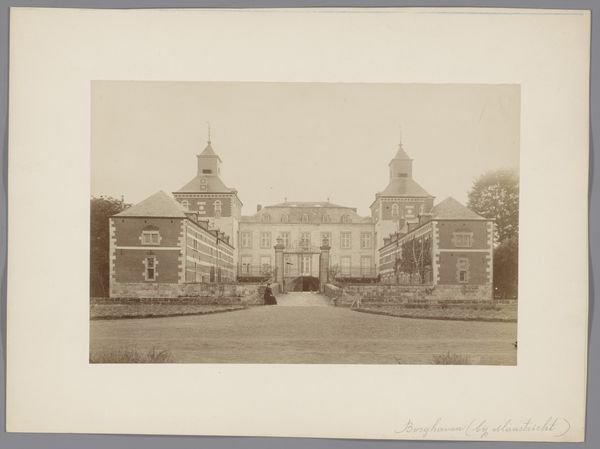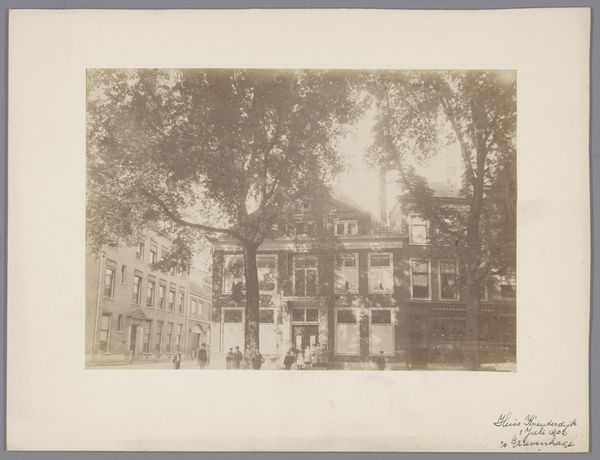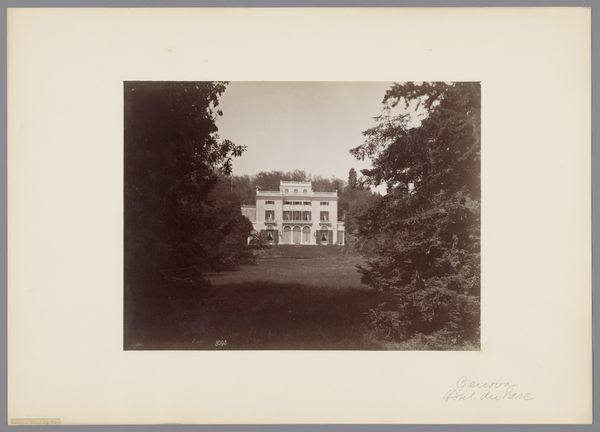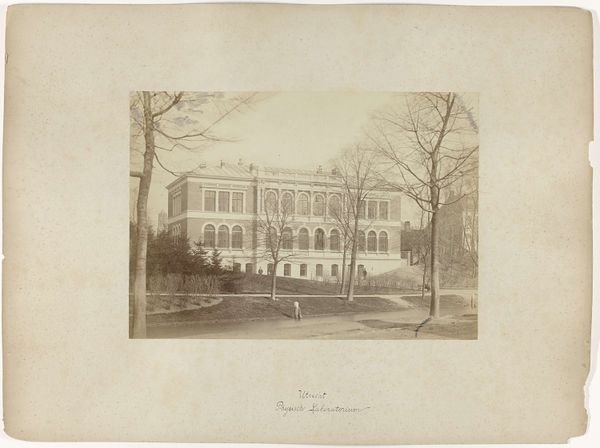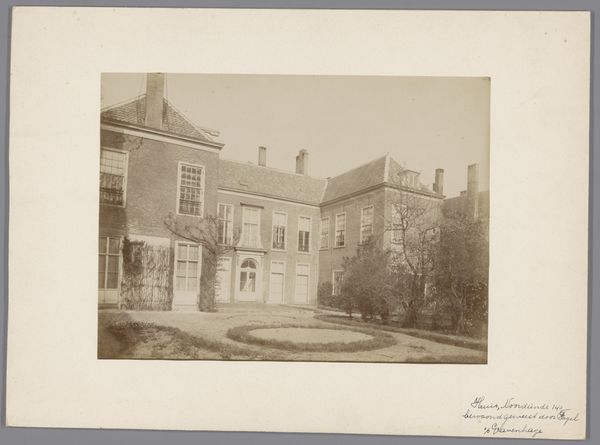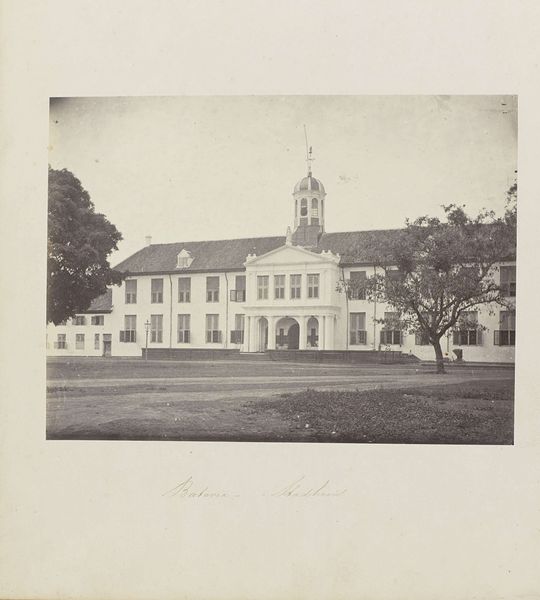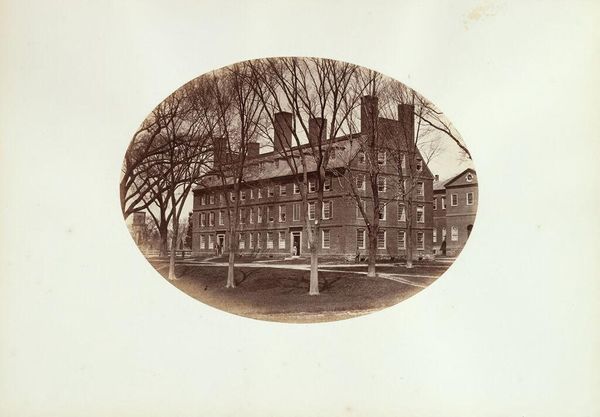
plein-air, photography
#
plein-air
#
landscape
#
photography
#
cityscape
Dimensions: height 125 mm, width 158 mm, height 302 mm, width 250 mm
Copyright: Rijks Museum: Open Domain
Editor: Here we have an 1888 photograph titled "Achterkant van landhuis Dijnselburg," which translates to "Backside of Dijnselburg Manor," taken by Henry Pauw van Wieldrecht. It gives off a very still, formal feeling, doesn’t it? What strikes you most about it? Curator: Well, it’s essential to remember that photography in 1888 wasn’t the snapshot we know today. The subject is very deliberate. It is interesting how Wieldrecht chooses to photograph the back. What does "back" signify to you? Is it vulnerability? Is it privilege on display? Editor: I guess I hadn’t considered it like that. I was just thinking maybe he wanted to show the less-decorated side or the side that felt more private. But your point about vulnerability is interesting. Curator: Exactly! The 'back' can represent the parts of the elite’s lives they prefer not to publicize, even while the grandeur is still palpable. The very act of capturing it invites the viewer to consider the labor and social structures that enabled such a residence, structures often kept ‘behind the scenes’. Do you think there is a political dimension? Editor: It does force you to think about the labor that went into maintaining it. Thinking about it from the outside, this house represents real wealth and power and the contrast between those who had access to it and those who didn't. It also really prompts discussion of land ownership at that time. I suppose photographs from that era act almost as evidence of wealth disparities. Curator: Precisely! This photograph offers an entry point into broader discussions about class, power, and representation, urging us to look beyond the surface aesthetics. It asks, "Who benefits? Who is excluded?". Editor: I see how it's so much more than just a picture of a house. It reflects a whole system. Thanks!
Comments
No comments
Be the first to comment and join the conversation on the ultimate creative platform.
